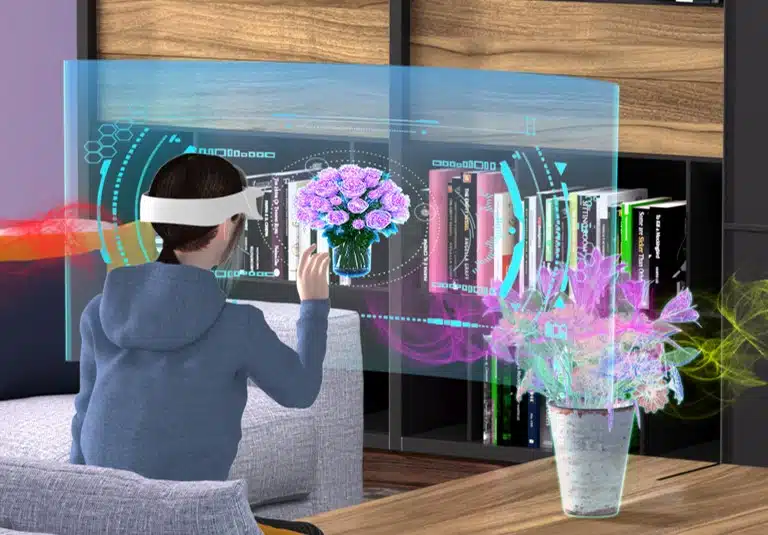
Virtual and augmented reality technologies have come a long way in replicating sights and sounds, but what about smell?
Imagine walking through a beautiful orchard, smelling the sweet scent of fruit wafting through the air. Or experiencing the foul stench of durian fruit, all from the comfort of your own home.
Now, researchers from China and Hong Kong have developed a wearable device that lets users smell anything they want, all while interacting with virtual reality (VR).
A new era of multi-layered experience for virtual reality
In a new study in the journal Nature Communications, the researchers detailed a lightweight, flexible, and wireless olfactory system that can recreate various familiar odors in real-time.
The device, which users wear close to their nose, uses odor generators made with paraffin wax, hooked up to a programmable heat source.
As the source heats up, the wax melts and the desired smells are released. The team ran VR simulations of people walking through an orchard or picking up a flower while wearing the device. As people interact more closely with a virtual source of smell, such as bringing a virtual rose up to the nose, the device heats up further, producing stronger smells.
A magnetic induction coil conducts the heat away to rapidly shut off the odor once a virtual stimulus is out of reach.
The researchers integrated a “grid” of smells that provide a layered and multi-smell experience. Users can smell anything from apples to caramel to even mojitos. There are 30 odors in total available.
For now, there are two versions: a small patch that can be stuck to the user’s top lip but only includes two odor generators, and a larger mask that goes over the nose and has nine odor generators for a richer experience.
This opens the door for truly immersive virtual reality experiences, whether it’s films or video games, but the technology could also have educational or medical purposes.
For instance, the VR face mask could be used to evoke memories in patients suffering from amnesia and dementia. Yiming Liu, a researcher with the Department of Biomedical Engineering at the City University of Hong Kong and chief author of the paper, explains that odors bypass the thalamus, the brain’s information center, and go directly to the olfactory center of the brain. This may explain why odors can trigger memories and emotions.
Smell: an underappreciated sense
As science accelerates towards “the creation of a flawless 3D virtual world,” this new technology takes us one step closer to fully immersing ourselves in virtual reality.
The device offers a more realistic and multi-sensory experience, unlocking the full potential of virtual reality. However, this is not the first such attempt.
Previous VR olfactory systems relied on atomizers similar to the ones found in essential-oil diffusers and medical nebulizers, but their main drawback is they require liquid odor sources that can be cumbersome. The solid wax paraffin allows the technology to be integrated into a single compact device that can be attached directly to the face.
The idea to augment an experience with smell is actually not new at all. For instance, a 1922 issue of the magazine Science and Invention described one of the wackiest devices ever conceived: the smell organ. This is a conceptual musical instrument in which a musician would shoot certain scents when playing certain keys on the organ. Some people laughed at the idea, but it may have been just ahead of its time.
It’s clear that this new technology is only the beginning. As virtual and augmented reality technologies continue to evolve, we can expect to see even more advances in our ability to replicate and experience the world around us.






